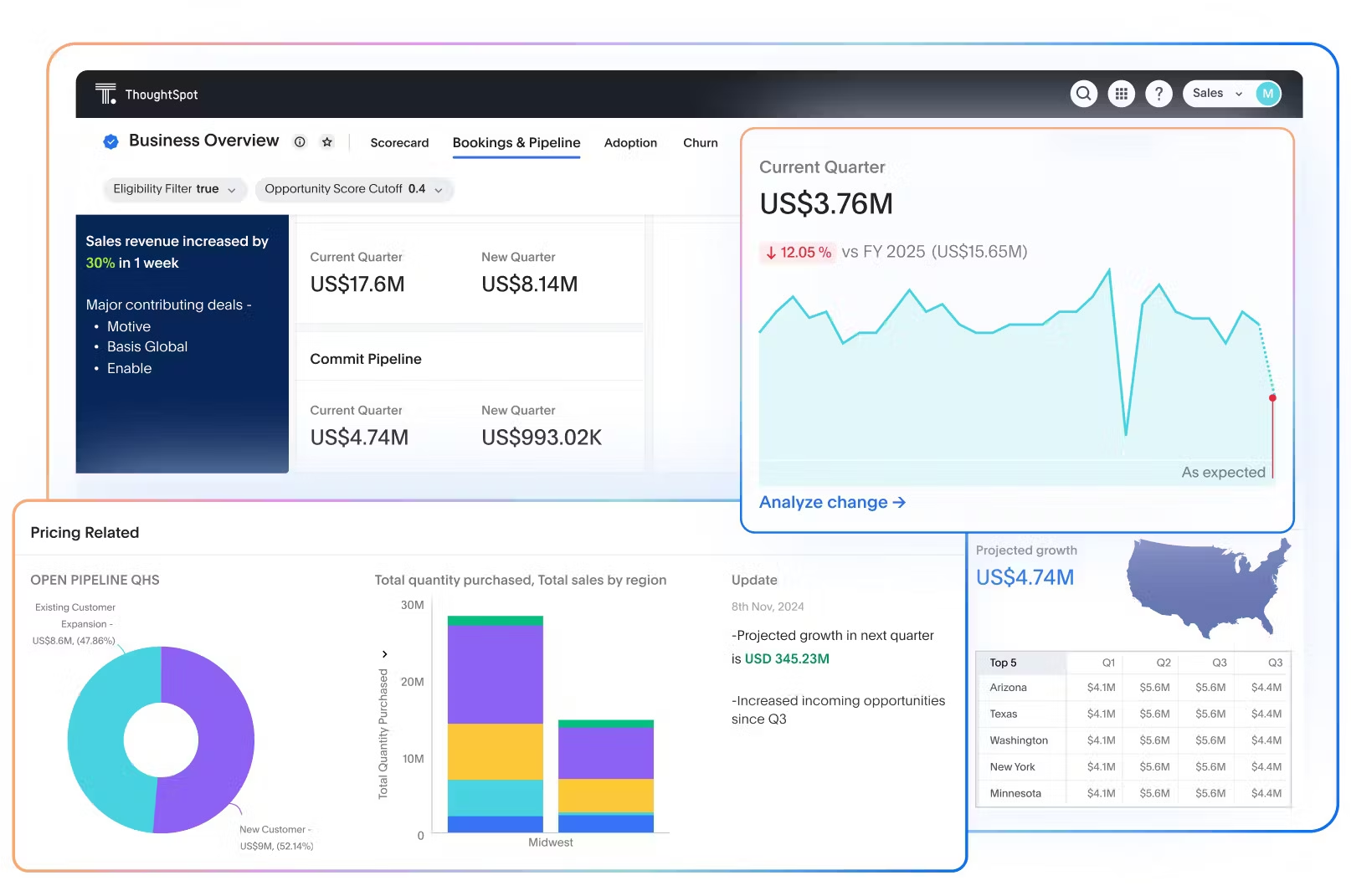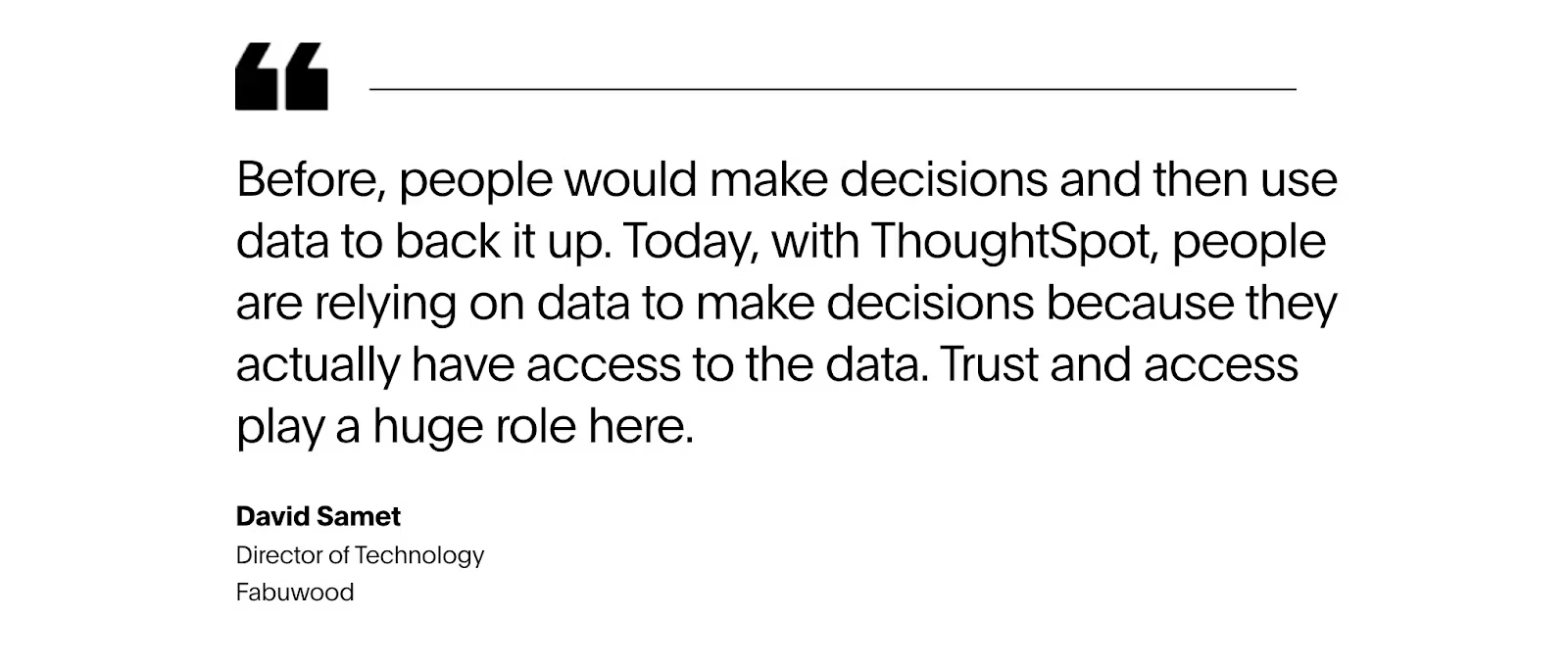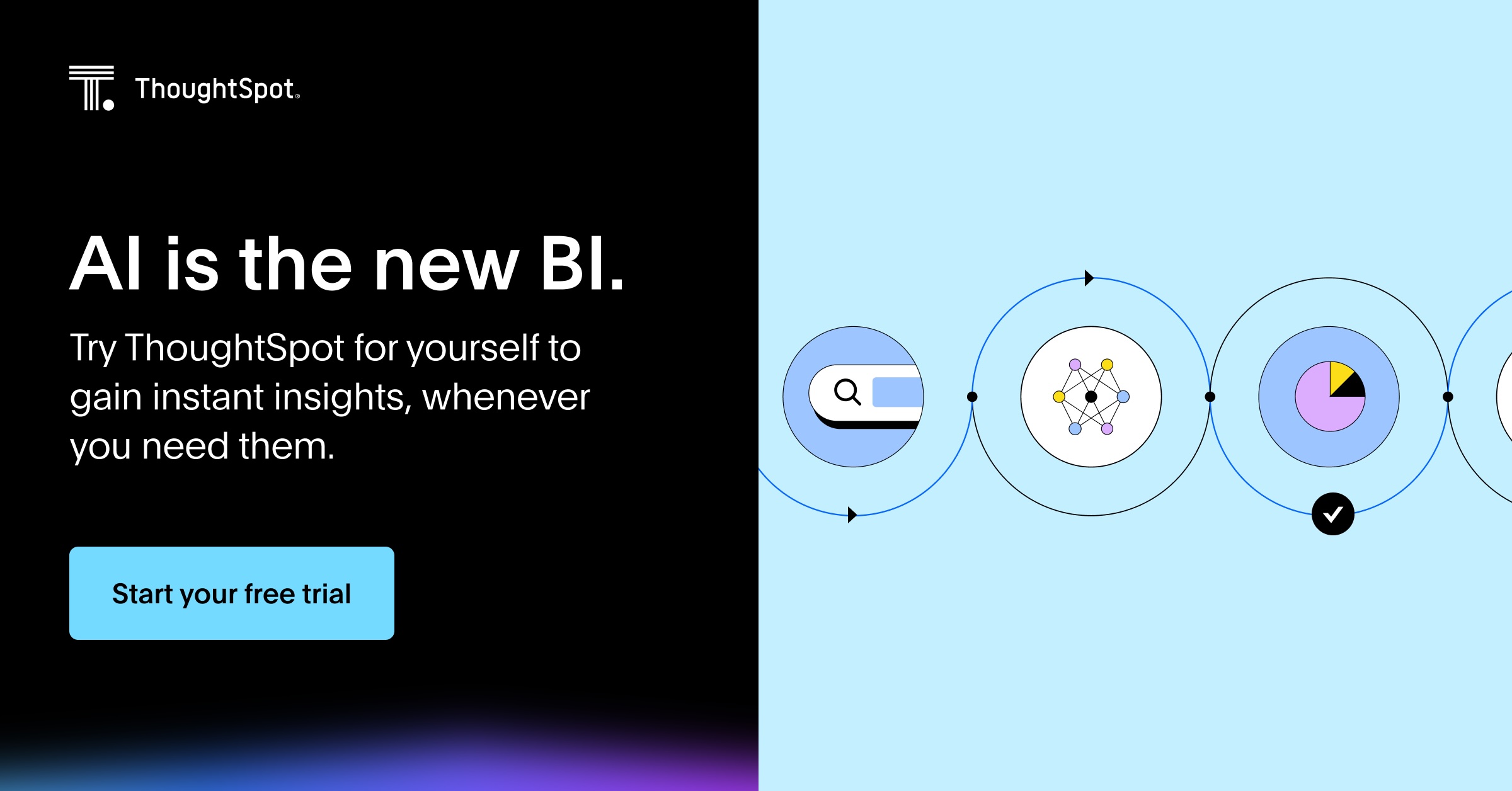What if every piece of data you touch could unlock a window into the future? Advanced analytics makes this possible, transforming how businesses interact with their data. In an era where data is generated at an unprecedented rate, organizations are presented with both a challenge and an opportunity. The challenge lies in sifting through vast amounts of information to find actionable insights. The opportunity, however, is in harnessing the power of advanced analytics to drive strategic decision-making. Advanced analytics not only helps in understanding what has happened in the past but also empowers organizations to anticipate what lies ahead.
With these insights at your fingertips, advanced analytics empowers you to make proactive decisions that keep your business ahead of the competition. In today’s fast-paced world, relying on data to shape future strategies isn’t just an advantage—it’s essential.
Table of contents:
Advanced analytics is a suite of sophisticated techniques designed to analyze both structured and unstructured data, allowing organizations to uncover hidden patterns and derive actionable insights. By leveraging AI analytics, machine learning, and other advanced techniques, advanced analytics goes beyond understanding historical patterns to predicting trends, optimizing processes, and offering a deeper understanding of customer behavior.
It integrates methodologies such as predictive modeling and data mining, moving beyond traditional analytics, which mainly focuses on historical data. This approach empowers businesses to forecast future trends, enhance decision-making processes, and proactively respond to market changes, driving growth and competitive advantage.
Imagine you’re running a retail company that uses advanced analytics to optimize inventory management. By analyzing historical sales data, customer purchasing patterns, and external factors like seasonal trends and market shifts, you can predict which products are likely to be in demand. This predictive capability allows you to stock up on popular items before peak shopping seasons, reduce excess inventory of less popular items, and ultimately enhance customer satisfaction by ensuring that products are available when customers want them.
By leveraging advanced analytics tools, you not only streamline operations but also boost profitability and competitiveness in a crowded marketplace.
While both advanced analytics and business intelligence (BI) are essential components of data-driven decision-making, they serve different purposes and utilize distinct methodologies.
Business intelligence primarily focuses on descriptive analytics, helping organizations understand what has happened in the past. It employs tools and techniques to analyze historical data, generating reports, dashboards, and visualizations. BI provides insights into performance metrics and operational efficiency, enabling businesses to make informed decisions based on historical patterns.
In contrast, advanced analytics tools goes beyond mere reporting to predict future outcomes and prescribe actions. Advanced analytics empowers organizations to anticipate trends, optimize processes, and identify potential risks before they arise, facilitating more proactive decision-making.
💡 Organizations are at an inflection point in analytics—discover how AI, machine learning, and natural-language processing can transform your data strategy. Download the TDWI Best Practices Report to explore new use cases and best practices for implementation.
With business operations becoming increasingly complex, relying on basic data analysis is no longer sufficient. A McKinsey survey found that over half of corporate leaders (53 percent) are increasing their advanced analytics investments for general and administrative functions. This trend underscores the difficulties organizations face in fully leveraging their data resources. To address these challenges, organizations need advanced analytics to:
1. Data-driven decision-making
Advanced analytics enables organizations to make informed decisions based on data insights rather than intuition. By analyzing large datasets, business users can identify trends, correlations, and anomalies that might not be apparent through traditional analysis.
And with ThoughtSpot’s AI-powered natural language search, you can easily ask questions and receive instant insights without needing to navigate complex interfaces.
2. Predictive insights
Anticipating future trends and customer behaviors is crucial for maintaining a competitive edge. Predictive analytics can help anticipate customer needs, optimize operations, and enhance risk management.
Advanced analytics solutions like ThoughtSpot’s SpotIQ leverage machine learning to uncover hidden patterns and trends. By automating the forecasting process, businesses can generate insights into potential outcomes and explore various “what-if” scenarios.
3. Personalization
Advanced analytics facilitates personalized experiences for customers by analyzing their behavior and preferences. This approach leads to improved customer satisfaction and loyalty, as businesses can tailor their offerings to meet individual needs. Additionally, by identifying at-risk customers through behavior patterns, organizations can implement targeted retention strategies, effectively reducing customer churn.
4. Operational efficiency
By leveraging advanced analytics, organizations can streamline operations, reduce costs, and enhance productivity. Analyzing operational data helps identify inefficiencies and areas for improvement. Furthermore, well-managed data ensures information derived from advanced analytics is accurate and actionable, allowing teams to make informed decisions that drive continuous improvement.
ThoughtSpot’s self-service analytics empowers all business users to explore analytics independently, fostering innovation and collaboration. With intuitive tools at their fingertips, teams can generate reports, visualize data, and gain insights that drive timely decisions.
5. Competitive advantage
By effectively utilizing advanced analytics, you can gain a significant upper hand over your competitors. Insights derived from data can inform your strategic initiatives and drive innovation, enabling you to respond swiftly to market changes and customer demands. Leveraging advanced analytics allows you to identify emerging trends, understand market dynamics, and make data-driven decisions that differentiate your business.
6. Real-time insights
With the rise of big data and AI, advanced analytics enables organizations to process and analyze data in real time, allowing for quicker responses to changing market conditions.
ThoughtSpot’s Liveboards deliver real-time updates on key metrics, enabling stakeholders to react quickly to shifting conditions.

Advanced analytics encompasses a range of sophisticated techniques designed to extract deeper insights from data and facilitate more strategic decision-making. Some key techniques include:
1. Predictive modeling employs statistical algorithms and machine learning methods to analyze historical data and forecast future outcomes. By predicting customer behavior, sales trends, and operational performance, organizations can better anticipate needs and challenges.
2. Machine learning involves training algorithms to identify patterns in data and make predictions. It can be applied to numerous use cases ranging from recommendation systems to fraud detection, which enables businesses to automate some decision-making and improve accuracy.
💡Predictive analytics vs. machine learning: How to leverage both?
3. Data mining explores large datasets to uncover hidden patterns, correlations, and anomalies. Techniques like clustering, classification, and association rule learning help organizations discover insights that might not be apparent through traditional analysis.
4. Text analytics focuses on unstructured data from sources like social media, customer reviews, and surveys. By utilizing natural language processing (NLP) and sentiment analysis, organizations can gauge customer opinions, identify trends, and enhance products and services.
5. Time-series analysis combs through data points collected or recorded at specific intervals. This technique helps organizations recognize temporal patterns, identify seasonality, and make forecasts based on historical trends.
6. Prescriptive analytics goes beyond predictions to recommend specific actions based on data insights. By simulating different scenarios and evaluating potential outcomes, this technique aids organizations in making informed strategic decisions.
7. Anomaly detection identifies unusual patterns or outliers in data that might signify fraud, operational issues, or other significant events. By flagging anomalies in real-time, organizations can respond quickly to mitigate risks.
8. Interactive data visualization transforms complex data into graphical representations, simplifying the identification of trends, patterns, and outliers. Effective data visualization allows stakeholders to grasp large datasets at a glance, facilitating quick, informed decisions.
Healthcare
Advanced analytics is transforming healthcare by enhancing patient care and operational efficiency. Predictive models help identify high-risk patients, optimize treatment plans, and streamline hospital operations. By using real-time data, healthcare providers can make faster, more accurate decisions.
NeuroFlow, a cloud-based healthcare platform, found it was spending too much time on dashboard creation with its previous BI tool. With ThoughtSpot's advanced analytics, the company improved data accessibility and empowered users, resulting in a notable increase in self-service reporting and overall satisfaction in mental healthcare management.
“There was a clear need for change. It was hard to find the data people needed along with the context they needed to understand it. ThoughtSpot has solved those pain points.”
Retail
With advanced analytics, retailers can optimize their inventory, personalize marketing efforts, and predict consumer demand. By analyzing shopping patterns, they can offer personalized recommendations and create targeted promotions, boosting customer loyalty and revenue. Additionally, advanced analytics empowers retailers to segment their customer base more effectively, identifying key demographics and tailoring strategies to engage different groups.
For example, Canadian Tire used business intelligence solutions from ThoughtSpot to manage its inventory during the early days of the pandemic. In doing so, it was able to grow sales by 20%, despite 40% of its brick-and-mortar stores being temporarily closed.
Finance
In finance, advanced analytics is used to detect fraud, manage risks, and optimize portfolio strategies. AI-driven models can analyze real-time financial data, providing actionable insights that help firms reduce risks and make informed investment decisions. Through predictive analytics tools, financial institutions can identify potential fraud patterns and anomalies in transactions, allowing for swift intervention and prevention of financial losses.
For instance, Northmill transitioned from a legacy BI tool to ThoughtSpot and Snowflake to enhance data accessibility and analytics capabilities. This shift democratized data access, enabling teams to make informed decisions. As a result, KPI data became actionable, boosting customer conversion rates by 30%. With 60% of target users adopting ThoughtSpot, Northmill is poised to further leverage data for smarter business insights and improved financial services.
“It is all about being as relevant and personal as possible so users’ personal finance can benefit from the insights.”
Manufacturing
Advanced analytics plays a crucial role in predictive maintenance and process optimization. By analyzing machine data, manufacturers can identify patterns that signal potential issues, helping to prevent costly breakdowns and reduce downtime.
Furthermore, advanced analytics can optimize manufacturing processes by sifting through data from multiple sources, including supply chain logistics, inventory levels, and workforce productivity. This holistic view allows manufacturers to fine-tune their operations, reduce waste, and improve overall efficiency.
Fabuwood struggled with limited access to sales data using Power BI and Azure SQL. Implementing ThoughtSpot enabled the company to increase active users from 10 to 50 and improved query resolution speed by 300%. Executives now access real-time insights effortlessly, driving data-driven decisions.

ThoughtSpot is leading the way in simplifying advanced analytics. With its intuitive AI-driven platform, ThoughtSpot empowers you to put your data to use—regardless of whether you have advanced technical expertise. GenAI’s natural language search allows you to ask complex data questions in plain English and receive actionable insights instantly.
With ThoughtSpot, teams across your organization can harness the power of advanced analytics, from C-suite executives building strategies to marketing teams optimizing campaigns in real time. The platform integrates seamlessly with your existing data sources and tools, making it an essential component of your data strategy.
See how ThoughtSpot can transform your analytics experience–Start your demo today.










